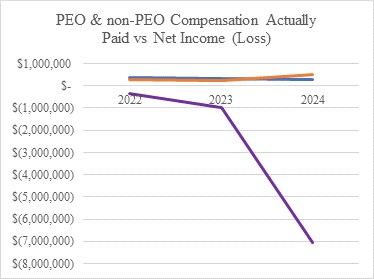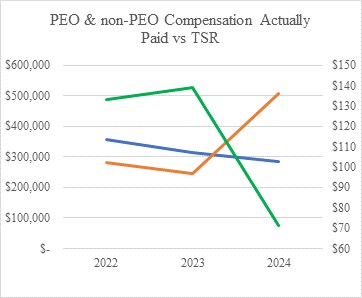In addition, Berkshire Bank provided to Stadco a term loan in the original amount of $4.0 million, or the “Stadco Term Loan”. On August 25, 2021, Stadco borrowed $4.0 million from Berkshire Bank under the Stadco Term Loan. The proceeds of the Stadco Term Loan were used to support the acquisition of Stadco and refinance existing indebtedness of Stadco. Interest on the Stadco Term Loan is due on unpaid balances beginning on August 25, 2021, at a fixed rate per annum equal to the 7-year Federal Home Loan Bank of Boston Classic Advance Rate plus 2.25%. Since September 25, 2021, and on the 25th day of each month thereafter, Stadco has made and will continue to make monthly payments of principal and interest in the amount of $54,390 each, with all outstanding principal and accrued interest due and payable on August 25, 2028.
On December 23, 2022, Ranor and certain affiliates of the Company entered into a Fifth Amendment to Amended and Restated Loan Agreement, Fifth Amendment to Promissory Note and First Amendment to Second Amended and Restated Promissory Note, or the “Amendment”. Effective as of December 20, 2022, the Amendment, among other things (i) extends the maturity date of the loan originally made to Ranor by Berkshire Bank in 2016, or the “Ranor Term Loan”, to December 15, 2027, (ii) extends the maturity date of the Revolver Loan from December 20, 2022 to December 20, 2023, (iii) increases the interest rate on the Ranor Term Loan from 5.21% to 6.05% per annum, (iv) decreases the monthly payment on the Ranor Term Loan from $19,260 to $16,601, (v) replaces LIBOR as an option for the benchmark interest rate for the Revolver Loan with SOFR, (vi) replaces LIBOR-based interest pricing conventions with SOFR-based pricing conventions, including benchmark replacement provisions, and (vii) solely with respect to the fiscal quarter ending December 31, 2022, lowers the debt service coverage ratio from at least 1.2 to 1.0 to 1.1 to 1.0. Our capital expenditures are limited to $1.5 million annually and contain loan-to-value, and balance sheet leverage covenants.
On December 20, 2023, Ranor and certain affiliates of the Company entered into a Sixth Amendment to Amended and Restated Loan Agreement and Second Amendment to Second Amended and Restated Promissory Note, or the “Sixth Amendment”.
Effective December 20, 2023, the Sixth Amendment, among other things (i) extended the maturity date of the Revolver Loan from December 20, 2023 to March 20, 2024; (ii) limits the use of proceeds from the Revolver Loan by the Company or its affiliates to $1,000,000 in the aggregate for due diligence and related professional costs incurred on or prior to March 20, 2024 in connection with any acquisitions; and (iii) makes certain changes to the amount and methods of valuation of equipment securing repayment of the borrowed funds.
On March 20, 2024, Ranor and certain affiliates of the Company entered into a Seventh Amendment to Amended and Restated Loan Agreement and Third Amendment to Second Amended and Restated Promissory Note, or the “Seventh Amendment”. Effective March 20, 2024, the Seventh Amendment, among other things (i) extended the maturity date of the Revolver Loan from March 20, 2024 to May 20, 2024; (ii) limits the use of proceeds from the Revolver Loan by the Company or its affiliates to $2,000,000 in the aggregate for due diligence and related professional costs incurred on or prior to May 10, 2024 in connection with any acquisitions; and (iii) makes certain changes to the amount and methods of valuation of equipment securing repayment of the borrowed funds.
On May 28, 2024, Ranor and the other Borrowers entered into an Eighth Amendment to Amended and Restated Loan Agreement and Fourth Amendment to Second Amended and Restated Promissory Note with Berkshire Bank. Effective May 24, 2024, the Eighth Amendment, among other things, (i) extends the maturity date of the Revolver Loan from May 24, 2024 to August 30, 2024; (ii) amends the maximum principal amount of the Revolver Loan from $5,000,000 to $4,500,000; and (iii) effective on June 1, 2024, increases the Term SOFR Margin (as defined in the Amendment) used to calculate the interest rate from 2.25% per annum to 2.50% per annum.
On September 4, 2024, Ranor and the other Borrowers entered into a Ninth Amendment to Amended and Restated Loan Agreement and Fifth Amendment to Second Amended and Restated Promissory Note, or the “Ninth Amendment”, with Berkshire Bank. Effective August 30, 2024, the Ninth Amendment, among other things, (i) extends the maturity date of the Revolver Loan from August 30, 2024 to January 15, 2025.
The Ranor Term Loan, the Stadco Term Loan and the Revolver Loan, or collectively, the “Berkshire Loans,” may be accelerated upon the occurrence of an event of default as defined in the Loan Agreement. Upon the occurrence and during the continuance of certain default events, at the option of Berkshire Bank, or automatically without notice or any other action upon the occurrence of certain other events specified in the Loan Agreement, the unpaid principal amount outstanding under the facility, together with accrued interest and all other obligations, would become immediately due and payable without presentment, demand, protest, or further notice of any kind.

